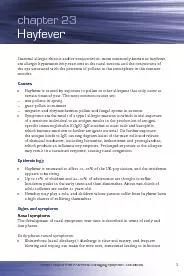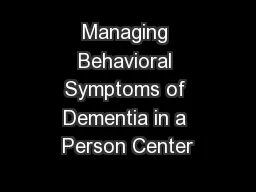PDF-Sample chapter from FASTtrack: Managing Symptoms, 2nd edition
Author : lindy-dunigan | Published Date : 2015-08-05
1 chapter 23 Hayfever Seasonal allergic rhinitis andor conjunctivitis more commonly known as hayfever are allergic hypersensitivity reactions in the nasal mucosa
Presentation Embed Code
Download Presentation
Download Presentation The PPT/PDF document "Sample chapter from FASTtrack: Managing ..." is the property of its rightful owner. Permission is granted to download and print the materials on this website for personal, non-commercial use only, and to display it on your personal computer provided you do not modify the materials and that you retain all copyright notices contained in the materials. By downloading content from our website, you accept the terms of this agreement.
Sample chapter from FASTtrack: Managing Symptoms, 2nd edition: Transcript
Download Rules Of Document
"Sample chapter from FASTtrack: Managing Symptoms, 2nd edition"The content belongs to its owner. You may download and print it for personal use, without modification, and keep all copyright notices. By downloading, you agree to these terms.
Related Documents














